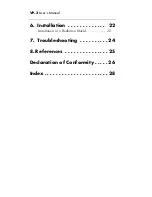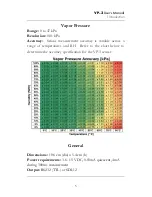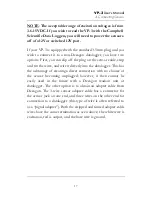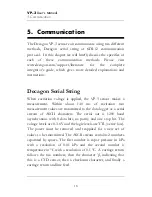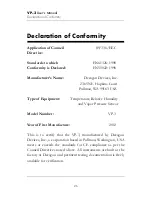
VP-3
User’s Manual
3. RH Sensor
12
layer of liquid water present over a thick slurry of NaCl crystals.
The VP-3 sensor can either be sealed into a chamber or bell jar
with the salt solution or the opening of the VP-3 can be sealed
into a small chamber that contains the salt solution. Whatever
method is used, it is
critical
that the VP-3 sensor be at the same
temperature as the salt solution or large errors in the measured
RH will occur.
Salt solutions prepared at a wide range of RH are available from
Decagon (see chart below). It is possible to prepare your own
solutions using the mixing ratios shown below, but great care and
precision are required to obtain accurate results. It is especially
important that the salt used be pure and dry. Decagon’s salt
solutions are specified accurate to within
±
0.3% RH. As
mentioned above, it is
critical
that the VP-3 sensor be at the same
temperature as the salt solution or large errors in the measured
RH will occur.
RH Sensor Reconditioning
If a VP-3 sensor has been exposed to solvents or other chemicals,
the following reconditioning procedure may bring the sensor
back to the original calibration state. First, bake the sensor in dry
Equilibrium
RH
(% saturation)
Salt
Molality
(m)
(mol salt/kg water)
25%
LiCl
13.41 m
50%
LiCl
8.57 m
76%
NaCl
6.00 m
92%
NaCl
2.33 m



